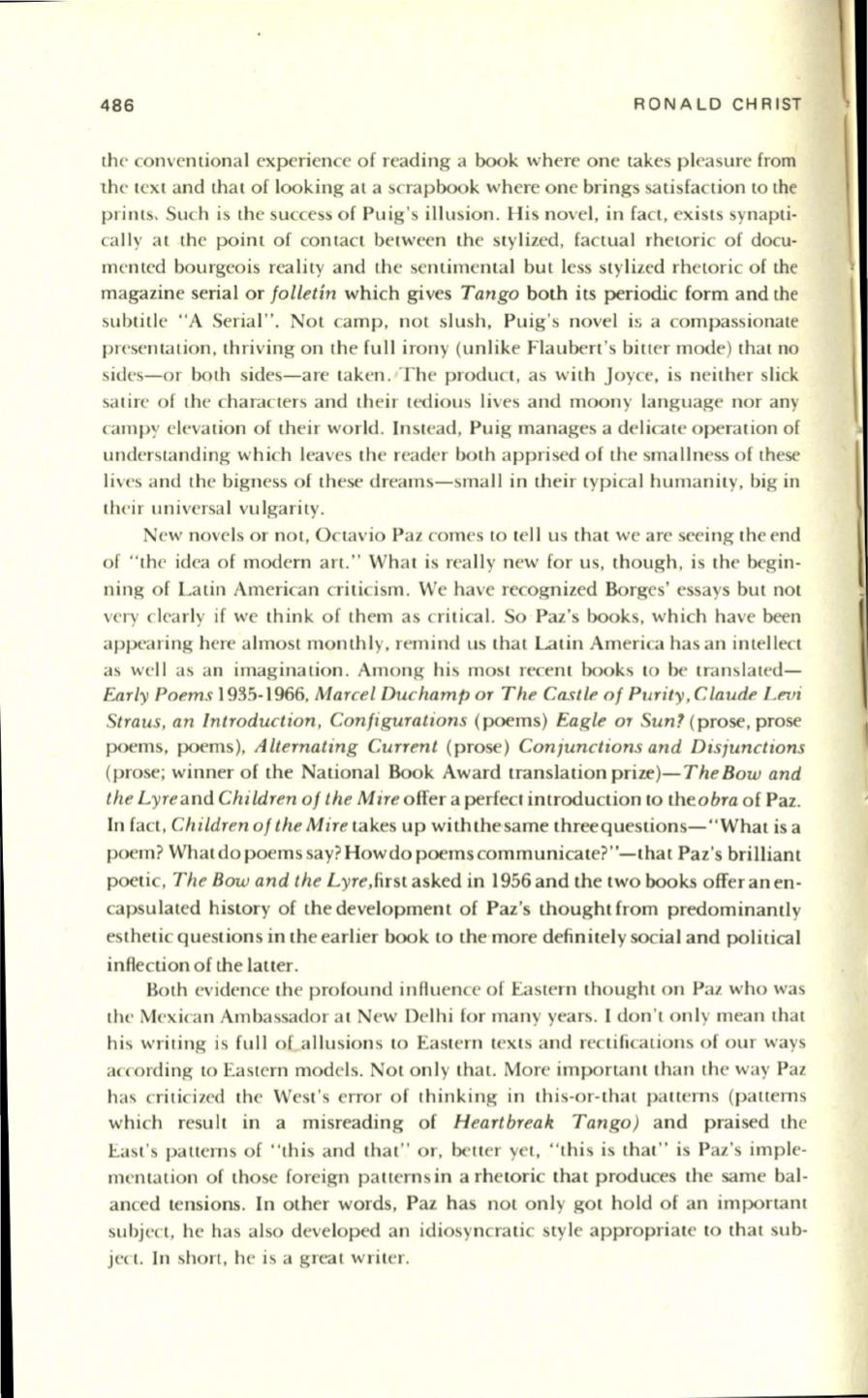
486
RONA LD CH RIST
the conventiona l experience of reading a book where one takes pleasure from
1he tex t and that of looking at a scrapbook where one brings a tisfaction to the
prints. Such is the success o f Puig's illusion . Hi s novel, in fact, ex ists synapti–
ca ll y a t the point of contact between the stylized, factua l rhetoric of docu–
mented bourgeois rea lity and th e sentimental but less stylized rhetoric of the
magazine serial or
folletin
which gives
Tango
both its periodic form and the
subtitle "A Serial". Not camp, not slush, Puig's novel is a compass ionate
presentation, thriving on the full iron y (unlike Flaubert's bitter mode) tha t no
sides-or both sides-are taken . The product, as with J oyce, is neither slick
sa tire o f the characters and th eir tedio u li ves and moon y language nor any
campy elevation of their world. Instead, Puig manages a delicate opera tion of
understanding which leaves the reader bo th apprised of the sma llness of these
li ves and the bigness of th ese dreams-sma ll in their typica l humanity, big in
their universa l vulgarity.
New novels or not, Octav io Paz comes to tell us tha t we are seeing the end
of " the idea of modern art. " Wh a t is really new for us, though , is the begin–
ning of Latin American criticism . We have recognized Borges' essays but not
very clearly if we think of th em as criti ca l. So Paz's books, which have been
appearing here almost monthly, remind us tha t Latin America has an intellect
as well as an imag ina tion . Among his most recent books to be translated–
Early Poems
1935-1966,
Marcel Duchamp
or
The Castle of Purity, Claude Levi
Straus, an Introduction, Configurations
(poems)
Eag le or Sun?
(prose, prose
poems, poems),
Alternating Current
(prose)
Conjunctions and Disjunctions
(prose; winner of the National Book Award translation prize)-
The Bow and
the L yreand Children of the Mire
offer a perfect introduction
to
theobra of Paz.
In fact,
Children of the Mire
takes up withthesame three questions- "What is a
poem?Whatdo poems say? Howdo poems communicate?"-that Paz's brilliant
poetic,
The Bow and the
Lyre,first asked in
1956
and the two books offer an en–
capsulated history of the development of Paz's thoughtfrom predominantly
es thetic questions in the earlier book to the more definitely social and political
inflection of the latter.
Bo th ev idence the profound influence of Eastern thought on Paz who was
the Mexican Ambassador a t New Delhi fo r many years. I don 't only mea n that
his writing is full of a llusion s to Eastern texts and rectifica tions of our ways
according to Eastern models. Not on ly tha t. Mo re important than the way Paz
has criticized the West's error of thinking in this-or-tha t pa tterns (patterns
which result in a misreading of
Heartbreak Tango)
and praised the
Eas t's pa ttern s of " this and th a t" or, better yet, " this is that " is Paz's imple–
menta tion of those foreign patterns in a rhetoric that produces the same bal–
anced tensions. In other words, Paz has not only got hold of an important
subj ect, he has a lso developed an idiosyncra tic sty le appropria te to tha t sub–
ject. In shon, he is a grea t writer.


